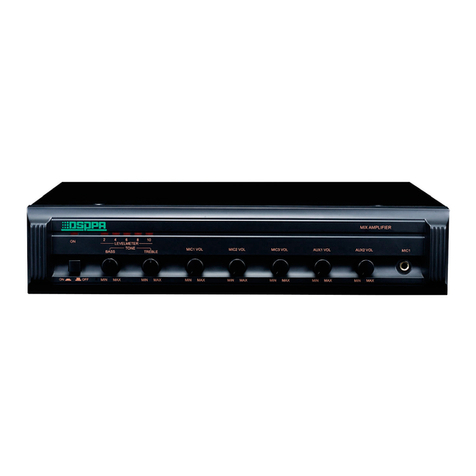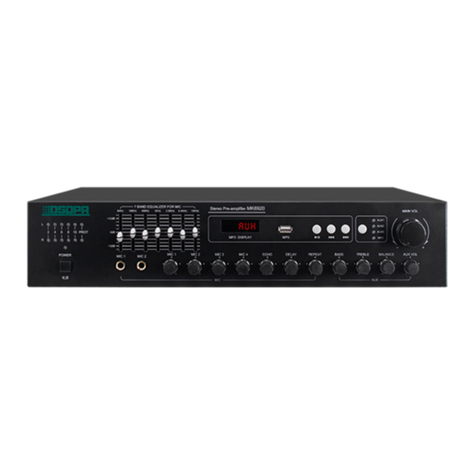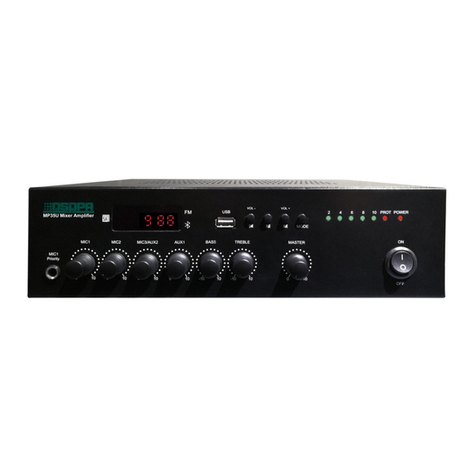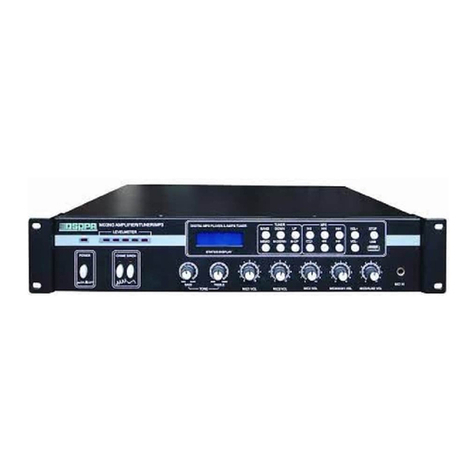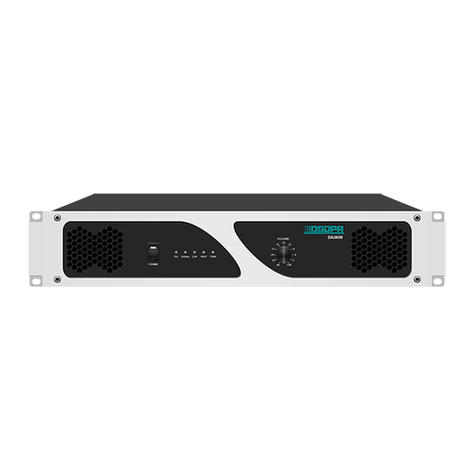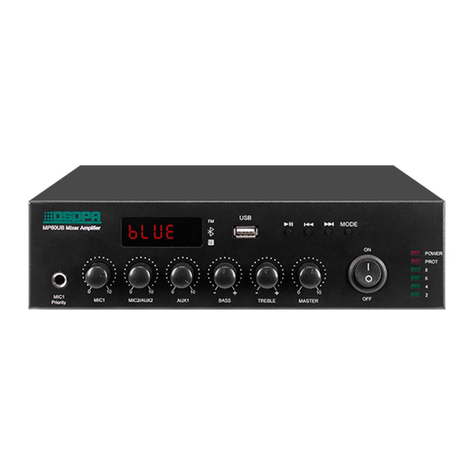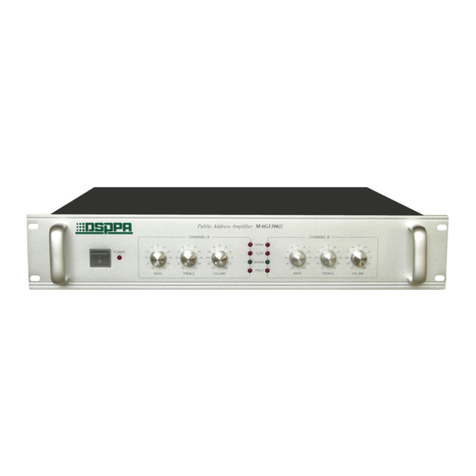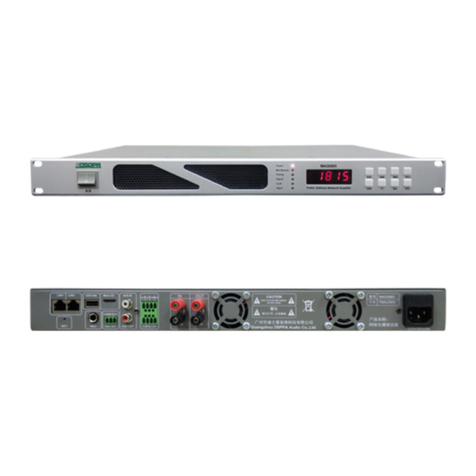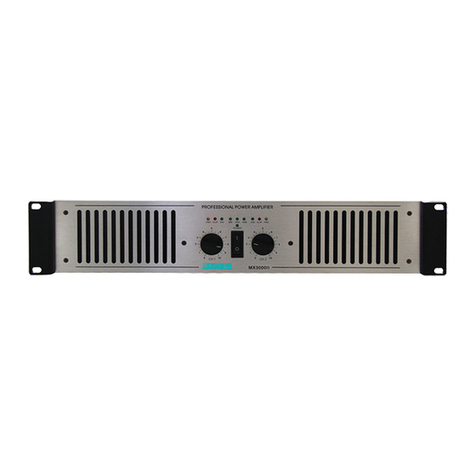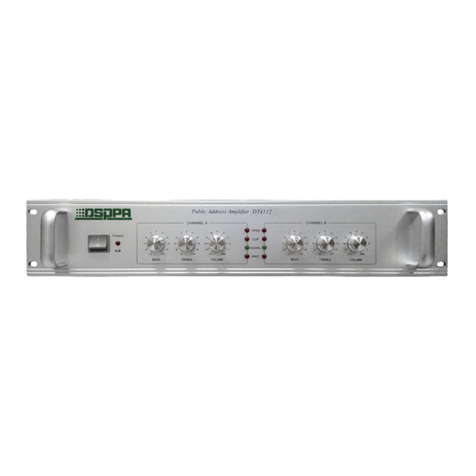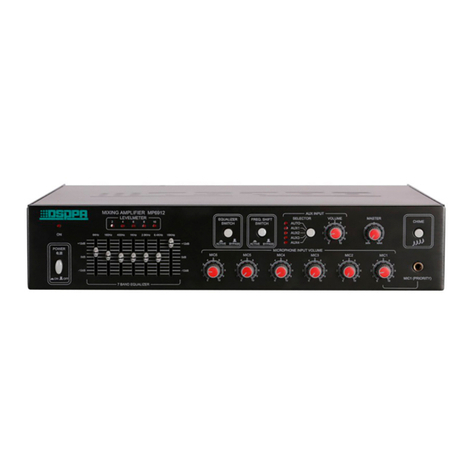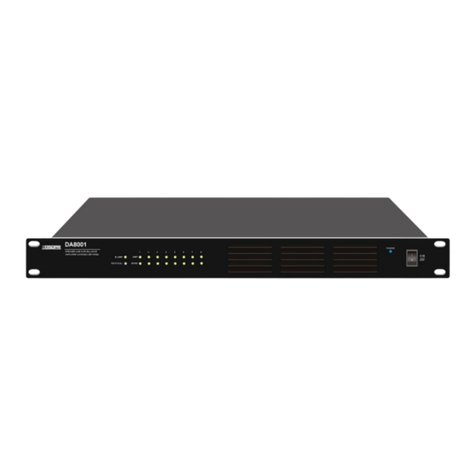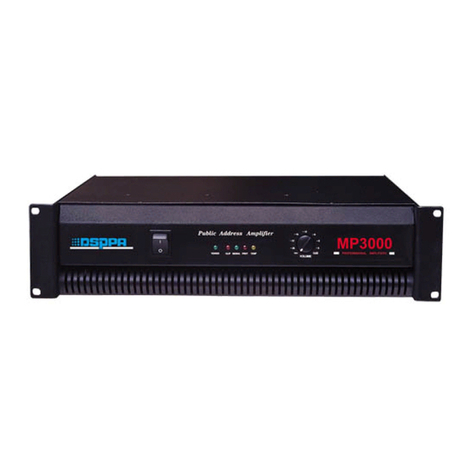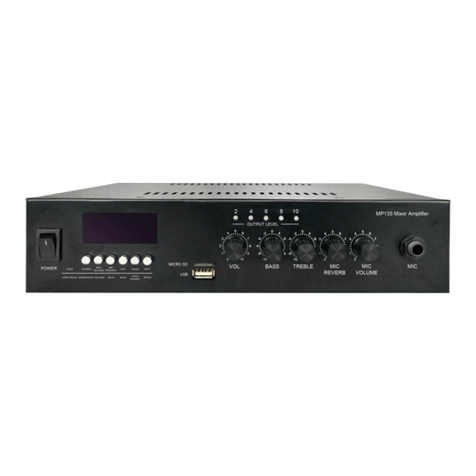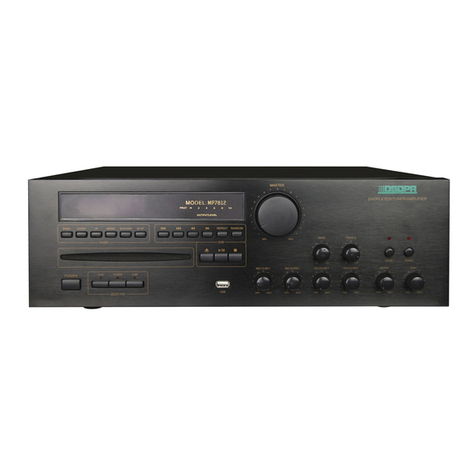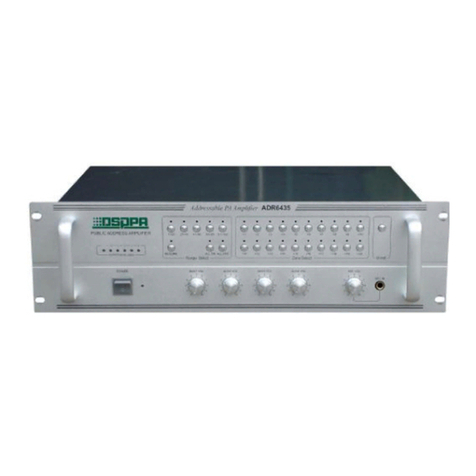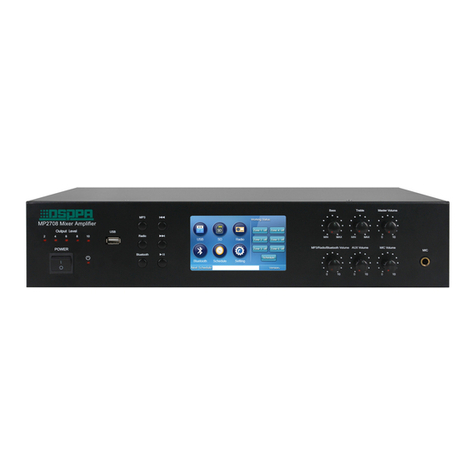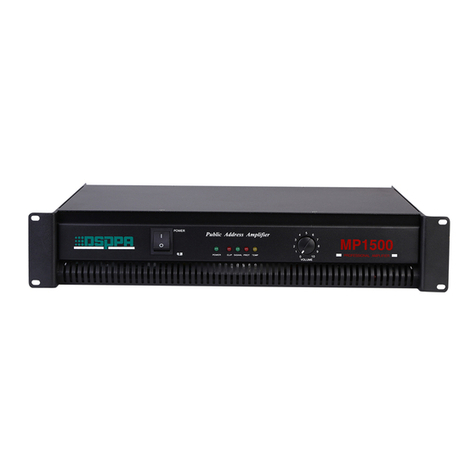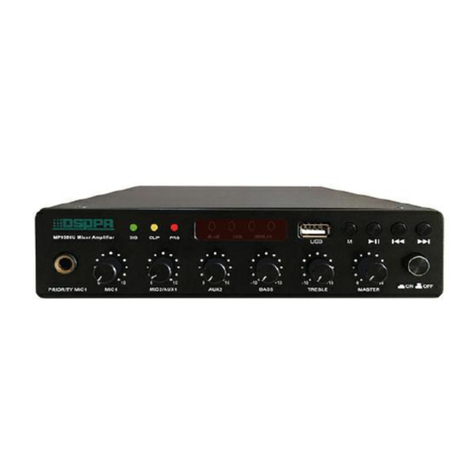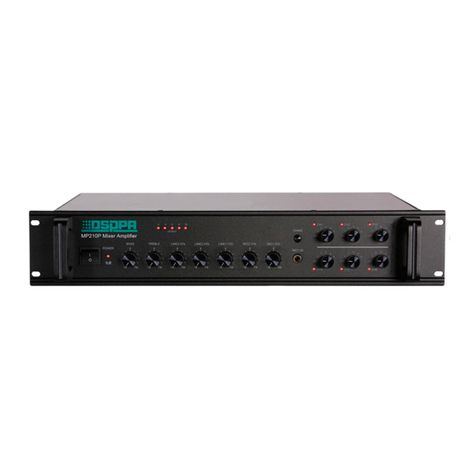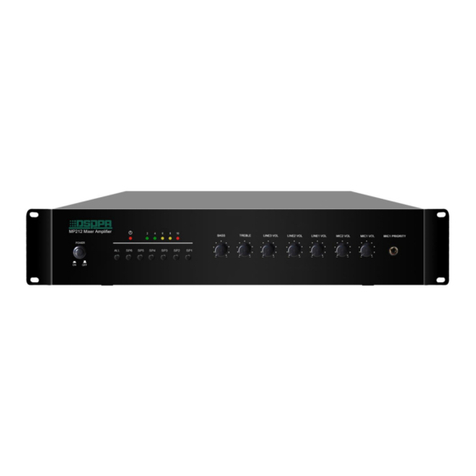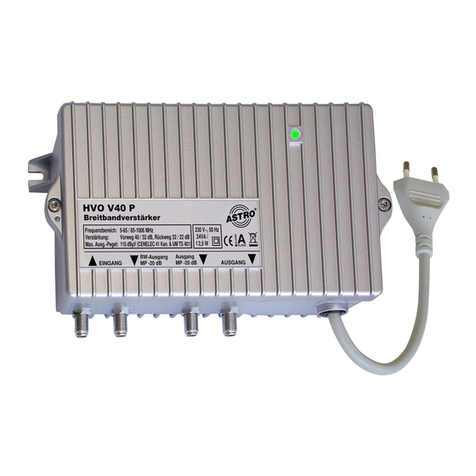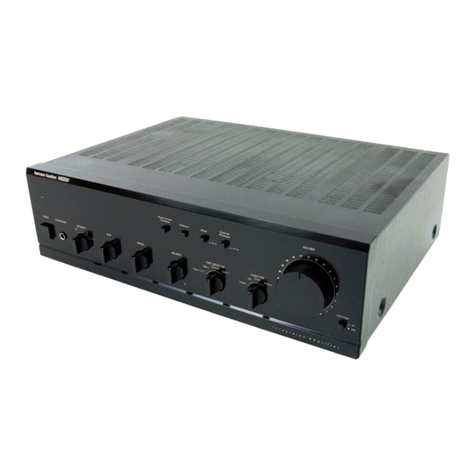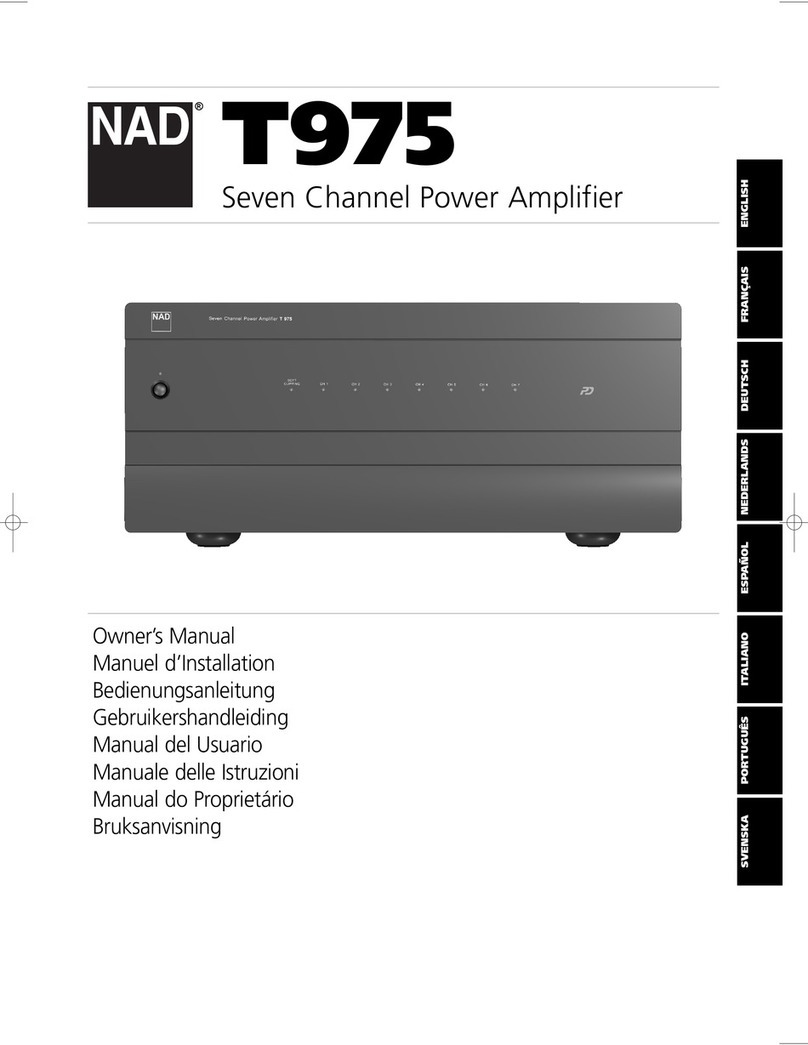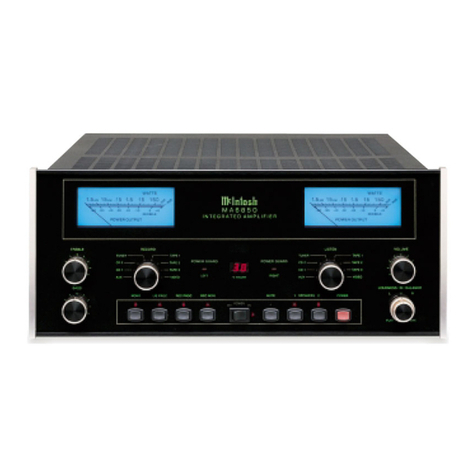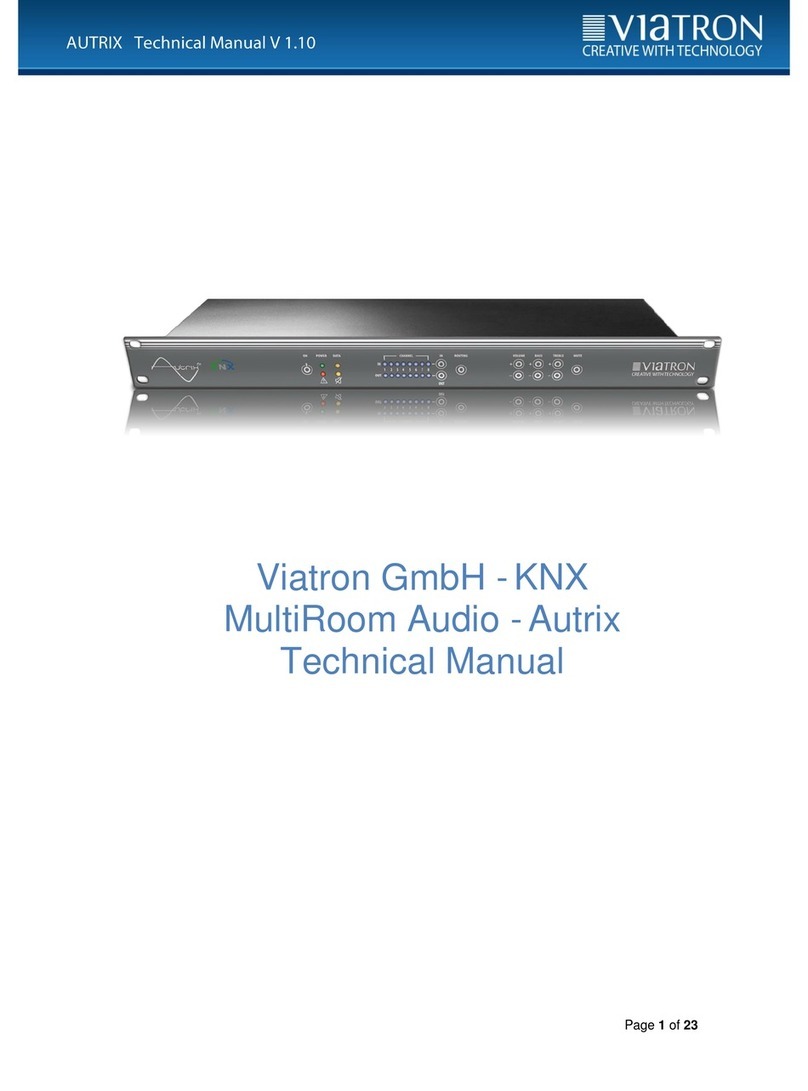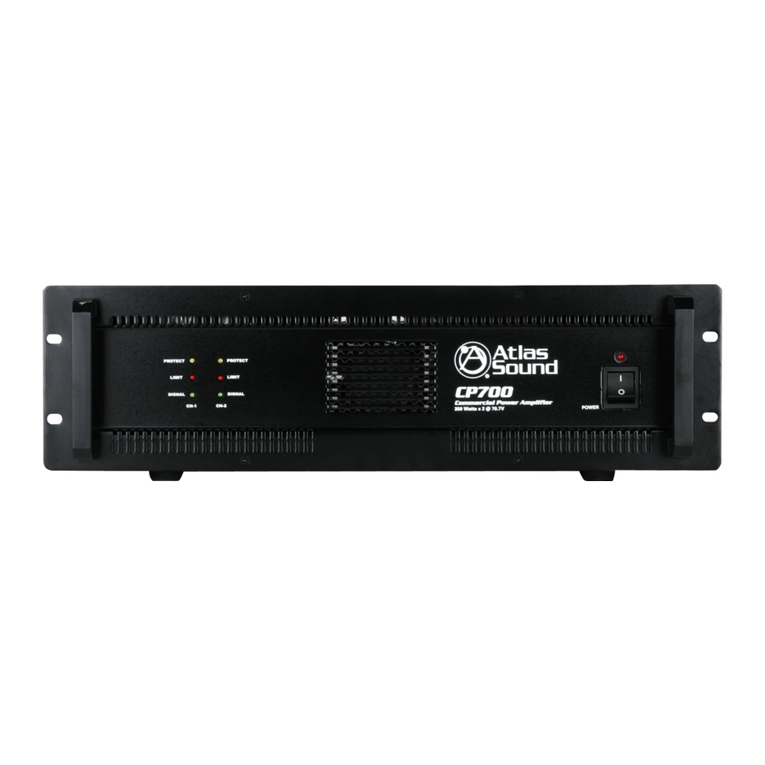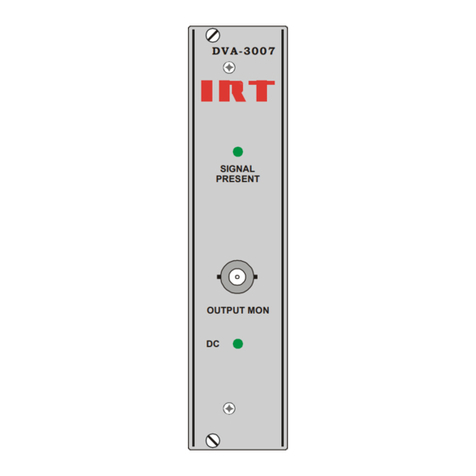
[email protected] /www.dsppatech.com The specifications will be subject to change without prior notice. Copyright © Guangzhou DSPPA Audio Co., Ltd. All rights reserved.
emergency voice program sources.
With 2 built-in 500W digital power amplifiers for automatic switching and backup as well as BGM
broadcasting.
With AB line speaker output for 8 zones, with independent switch and volume control for each zone,
with master volume and treble/bass adjustment, with an output of 500W for each zone and a total
power of no more than 500W for 8 zones.
With 8-zone on/off function, including on/off buttons for independent zones and all zones (press and
hold the button to open all zones of the system).
Support 6 external inputs, including 2 balanced microphone inputs, 4 balanced line inputs for fire audio
input and background music broadcasting; and 1 line output for external expansion or recording
backup.
With built-in audio source playback (mp3, wav).
Featuring dual bus RJ45 network ports and CAN bus transmission, the host and expansion amplifier are
cascaded hand-in-hand or looped. If the host is connected to a single expansion amplifier, it can support
a maximum transmission distance of 600 meters; if connected to expansion amplifiers in a centralized
manner, it can support up to 19 PAVA9500E expansion amplifiers, with a total of 160 zones, or up to 30
PAVA9425E expansion amplifiers, with a total of 128 zones.
Support automatic playback and timing functions to enable timed fixed-point and fixed-area track
playback and unattended operation.
With 4 RJ45 network ports for paging microphones, it supports remote microphone paging and
zone/group broadcasting, and can be connected to up to 8 units.
With 8 trigger inputs (with dry contact and level optional), 8 dry contact trigger outputs, and 8 24V
override outputs.
Support remote computer detection and control, audio priority settings, operating records review, and
impedance detection parameters settings.
Support speaker line detection (grounded, open circuit, short circuit) and system detection (expansion
amplifier or microphone dropout).
Support AC power supply and DC24V power supply, which can be identified and switched automatically,
with AC power supply as the main power supply normally.
With AC and DC power connection detection and warning functions.
With DIP settings for overall system monitoring / trigger mode configuration / host IP address selection
/ host IP address reset.
Support system fault detection, emergency output and emergency reset input.
With multi-function display for device working status: working/fault/normal.
With an external SD card slot for expanding 32G storage space to store external audios, recordings, logs,
built-in EVAC voices, etc.
With monitoring function, built-in recording function, and built-in timed programming function for
timed programming of dry contacts to control the on/off of the power sequence controller.
Support simultaneous output of dual audio, support remote paging for any single or multiple zones
while broadcasting background music, without interrupting background music broadcasting of other
zones. In this mode, the emergency broadcast remains the highest priority and will be broadcast to all
zones forcibly, followed by the paging broadcast, and the background music channel will act as a backup
to the emergency broadcast channel.
The host local handheld microphone supports single track recording and loop playback.
Audio source priority level: Host EMC MIC > Fireman MIC > Host or Fireman MIC EVAC or ALERT
Broadcasting > Fire Alarm Dry Contact Trigger > Remote Paging Microphone > Timed Point
Broadcasting > Recording and Broadcasting Function of Handheld MIC on Host Panel > Local BGM Player
= 1-6 External Inputs.

